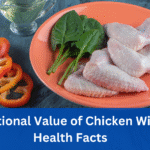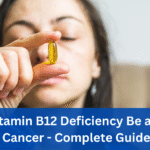Poor blood circulation in the legs can cause a host of problems, from discomfort and swelling to more serious conditions like varicose veins and deep vein thrombosis. One of the key factors in maintaining healthy circulation is proper nutrition — and specifically, the right vitamins. Certain vitamins have been shown to support vascular health, improve blood flow, and enhance overall leg function.
In this comprehensive guide, we’ll explore the most important vitamins to Improve the blood circulation in leg, how they work, how to get them through food and supplements, and what else you can do to promote leg health.
Why Blood Circulation in the Legs Is Important
The legs are often the first place where poor circulation becomes noticeable. Because they’re farthest from the heart and often subject to long periods of sitting or standing, the legs rely on strong, consistent blood flow to stay healthy.
When circulation is compromised, symptoms can include:
- Cold feet and toes
- Tingling or numbness
- Muscle cramps or pain
- Swelling
- Slow healing of wounds
- Fatigue or heaviness
Chronic circulation issues may also be a sign of peripheral artery disease (PAD), a condition where narrowed arteries reduce blood flow to the limbs.
Vitamins That aid Leg Circulation
Several vitamins play a critical role to Improve The Blood Circulation In Leg, supporting healthy blood vessels, red blood cell function, and circulation. Here are some best one
-
Vitamin B3 (Niacin)
Niacin, a form of vitamin B3, is known for its ability to improve blood flow by dilating blood vessels and reducing inflammation.
Benefits:
- Helps widen blood vessels, increasing circulation
- Reduces inflammation that can contribute to arterial stiffness
Sources:
- Chicken, turkey
- Tuna, salmon
- Peanuts
- Fortified cereals
- Supplements (niacin or niacinamide forms)
Note: High doses of niacin should only be taken under medical supervision due to possible side effects like flushing or liver stress.
-
Vitamin E
Vitamin E acts as a powerful antioxidant that protects blood vessels and supports red blood cell health, aiding in effective oxygen transport to the legs.
Benefits:
- Improves capillary and artery flexibility
- Prevents oxidative damage to blood vessels
- Reduces blood clot risk
Sources:
- Almonds
- Sunflower seeds
- Spinach
- Avocados
- Vegetable oils (sunflower, wheat germ)
-
Vitamin C
Vitamin C helps produce collagen, a protein that maintains the integrity of blood vessels. t also lowers inflammation and promotes the absorption of iron.
Benefits:
- Strengthens blood vessel walls
- Enhances nitric oxide production, aiding vessel dilation
- Promotes iron absorption for red blood cell health
Sources:
- Citrus fruits (oranges, lemons)
- Berries
- Bell peppers
- Broccoli
- Tomatoes
-
Vitamin D
Vitamin D deficiency has been linked to poor vascular health and increased risk of PAD. Adequate levels are essential for smooth muscle function in blood vessels.
Benefits:
- Regulates blood vessel contraction and relaxation
- Reduces inflammation
- Supports immune and cardiovascular health
Sources:
- Sunlight exposure
- Fatty fish (salmon, mackerel)
- Fortified dairy and plant milks
- Egg yolks
- Supplements (D3 preferred for better absorption)
-
Vitamin K
Vitamin K is essential for healthy blood clotting and helps prevent calcification (hardening) of arteries.
Benefits:
- Prevents calcium buildup in blood vessels
- Supports blood clotting processes
- Works with vitamin D to regulate vascular health
Sources:
- Kale, spinach, collard greens
- Broccoli
- Fermented foods (natto)
- Liver
- Supplements (K1 and K2 forms)
-
Vitamin B12
Vitamin B12 supports red blood cell production, crucial for oxygen transport and preventing anemia-related circulation problems.
Benefits:
- Maintains healthy nerve and blood cells
- Prevents anemia
- Supports energy metabolism in legs and muscles
Sources:
- Meat, poultry, fish
- Eggs
- Dairy products
- Fortified plant-based milks
- B12 supplements (especially important for vegans)
-
Folic Acid (Vitamin B9)
Folic acid works with B12 to form red blood cells and reduce homocysteine levels, which are linked to cardiovascular risk.
Benefits:
- Aids in red blood cell development
- Reduces inflammation in blood vessels
- Supports overall heart and circulation health
Sources:
- Leafy greens
- Beans and lentils
- Oranges
- Fortified grains
- Supplements (especially for pregnant women)
Other Nutrients to Support Leg Circulation
While vitamins play a big role, other nutrients and compounds are also important:
- Iron: Needed for hemoglobin in red blood cells.
- Magnesium: Helps with muscle relaxation and vessel dilation.
- Omega-3 Fatty Acids: Improve blood fluidity and reduce inflammation.
- Coenzyme Q10: Antioxidant that supports heart and vascular health.
Best Practices for Healthy Leg Circulation
Combine supplementation with these healthy habits:
- Stay Active: Regular walking or leg-focused exercises help push blood through the legs.
- Elevate Your Legs: This reduces pressure and helps blood return to the heart.
- Wear Compression Socks: Useful for people who stand or sit for long periods.
- Hydrate: Dehydration thickens blood and can impair flow.
- Avoid Smoking: Smoking impairs circulation and annihilates blood vessels.
- Healthy Weight: Excess weight puts pressure on leg veins and arteries.
When to See a Doctor
If you have persistent leg pain, numbness, swelling, or other circulation-related issues, it’s essential to consult a healthcare provider. These symptoms may be signs of a more serious condition like peripheral artery disease (PAD) or deep vein thrombosis (DVT).
Frequently Asked Questions (FAQ)
Q1: Can vitamins alone fix poor leg circulation?
A: Vitamins can support vascular health and improve circulation, but they are not a cure-all. For serious circulation issues, you’ll need a comprehensive approach, including lifestyle changes and possibly medical intervention.
Q2: How long does it take for vitamins to improve circulation?
A: It depends on the individual and the severity of the issue. While some people experience relief within a few weeks, others can require several months. A balanced diet and consistency are essential.
Q3: Is it better to get vitamins from food or supplements?
A: Whole foods are the best source because they provide a natural balance of nutrients. However, supplements are helpful if you have a deficiency, dietary restrictions, or increased needs.
Q4: Are there any risks in taking circulation vitamins?
A: Yes, excessive intake of certain vitamins (like niacin or vitamin E) can cause side effects. Always follow dosage recommendations or consult your doctor, especially if you take medications or have underlying conditions.
Q5: Are vitamin deficiencies common in people with poor circulation?
A: Yes. Deficiencies in B vitamins, vitamin D, and iron are commonly associated with poor circulation, fatigue, and cold extremities. A blood test can help identify any deficiencies.
Q6: Can poor circulation in the legs cause serious health problems?
A: Absolutely. Chronic circulation problems can lead to ulcers, nerve damage, infections, and increase the risk of blood clots or stroke. Early intervention is crucial.
Q7: Is vitamin K safe if I’m on blood thinners?
A: Vitamin K affects clotting, so if you take blood thinners (like warfarin), consult your doctor before increasing your intake. You may need to maintain a consistent level rather than avoid it entirely.
Conclusion
For general mobility and health, the legs’ blood circulation must be at its best. While exercise and healthy lifestyle habits form the foundation, vitamins to improve the blood circulation in leg — including B3, B12, C, D, E, and K — can significantly enhance circulation and vascular health.
If you experience persistent symptoms, consider checking your vitamin levels and talking to your healthcare provider about targeted supplementation. With the right nutrients and habits, you can keep your legs strong, energized, and free of circulatory issues.





